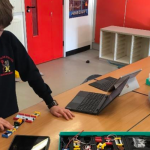Have you ever thought the importance of physical activity in your child’s life may be greater than you think? Daily exercise improves children physically, mentally, and academically. Moreover, it helps the parents to strengthen the family bonds with their children.
Why is physical activity important for children?
Physical activity and a child’s physical health are closely connected to each other, and they may affect various aspects of a child’s life. Physically active kids are more likely to lead a steadier life and be more outgoing as they feel more confident. The officials state that regular physical activity plays an important role in health as it:
- Balances weight
- Increases fitness levels
- Prevents serious diseases such as; heart problems, diabetes, obesity, etc.
- Improves mental state
- Helps kids focus on school subjects
To support their child’s development, the parents may encourage exercise and physical activity for kids. However, children are spending far too much time behind the screens of TVs, laptops, and smartphones nowadays. So, managing screen time for kids is crucial in getting kids active and encouraging them to run around, exercise, and explore the world outside.
Although even such a small physical activity as walking or cycling to school, doing some chores may be helpful, integrating a regular exercise routine into a child’s life is very important for a healthy child development process.
Difference Between Physical Activity and Exercise
Some people use these two words alternatively. Yet, there is an obvious distinction between them, and they mean two different types of activity.
Physical activity is considered any movement a person carries out by their muscles. Our daily activities, including walking to a grocery store, cleaning the house, gardening, etc., can be counted as examples. On the other hand, exercise is a series of planned, repetitive, and intentional movements such as going for a walk, daily workouts or playing sports.
The significant difference between these two is that exercise is intended to improve physical fitness. Also, the results and benefits of exercise can only be seen after some time. Being committed to and constant with it is important.
7 Benefits of Physical Activity
Weight Regulation
Children tend to prefer sugary products which contain empty calories. These calories may accumulate as fat and cause obesity. Parents should be cautious as obesity during childhood comes with a high risk of remaining obese as an adult. Physically active children burn most of the calories taken in during the day, which does not let fat accumulate and turn into overweight.
Strengthening Bones and Muscles
Physical activity for kids is fundamental to physical strength and posture. In addition, active kids often have healthier bone mass and density. Exercise benefits children also in terms of flexibility, stability, and performing daily tasks more easily.
Lower Risks for Serious Health Problems
Physical inactivity and obesity can cause many serious health problems in children. Yet, exercises for children strengthen the muscles, the heart, and lungs besides keeping the arteries and veins clean. In addition, regular physical activity also reduces blood sugar levels. Therefore, the risks of heart, lungs, or bone diseases can be prevented from such early age.
Improving Concentration
Sitting still for hours and focusing on a subject can be nightmarish for many children. With the rise of distractive stimulants both online and offline, short attention span in kids gets more and more common each day. Physical activity for kids benefits children in discharging the excess of their energy. So, exercise enables them to focus for longer durations more easily.
Better Cognitive Skills
Apart from physical health, the benefits of exercise also affect the mind. The officials claim that getting kids to do recommended exercise per week improves analytical thinking. During exercise, nerve cells in the brain’s prefrontal cortex and hippocampus are triggered to multiply and form new connections. The reason physically active kids usually have higher academic success is that they have higher developed cognitive skills than inactive ones.
Improving Emotional Well-being
Getting kids active is fundamental to children’s emotional well-being as well. First of all, it’s well-known that running and jumping around makes kids as happy as a lark. Moreover, a study conducted in 2019 shows that serotonin levels, associated with the feeling of happiness, are increased during physical activity. So, exercise for children reduces symptoms of depression and heightens appetite.
Additionally, it is claimed that when combined with exercise, mindfulness activities for children provide remarkable improvements in stress, depression, and anxiety disorders.
Increase in Self Confidence
Achieving some milestones or success in sports or exercise feeds children’s self-confidence. As they see themselves capable of actions that require certain skills or physical strength, they can grow more assured of themselves. One of the benefits of exercise is that children learn to fall, fail, and get up again. That mindset helps them when they face serious problems later on.
How Much Physical Activity Do Kids Need?
In the report called Physical Activity Guidelines for Americans, issued by the US Department of Health and Human Services, the importance of physical activity for children is emphasized. It is stated that “Children and adolescents ages 6 through 17 years should do 60 minutes (1 hour) or more of moderate-to-vigorous physical activity daily.”
The following are the exercise recommendations:
- Aerobic
- Muscle-strengthening: Dancing, hill walking, cycling…
- Bone-strengthening: Jumping rope, running, gymnastics, volleyball…
These are recommended to be performed as a part of the 60 minutes of exercise (or more) per day on at least 3 days a week in moderate-to-vigorous intensity. Yet, the parents should keep in mind that the exercises’ intensity changes according to the child’s age and physical state. For example, a toddler is suggested to have moderate physical activity like running around in a park, while an adolescent is more fit for vigorous physical activities such as playing sports games and swimming.
In addition to the benefits of physical activity, getting enough sleep influences child’s mental and physical health to a considerable extent. For example, growing children release growth hormones at maximum levels during the night’s sleep. So, sufficient sleep is one of the most important factors for a child’s physical health.
The American Academy of Sleep Medicine recommends that children between 6 to 12 years old get 9 to 12 hours of sleep per day while for those between 13 to 18 the recommended time for sleep is 8 to 10 hours. However, the data from Youth Risk Behavior Surveys show that about 6 out of 10 students do not get recommended amount of sleep for their age. This rate is even higher in high school students.
As the benefits of sleep on learning are also very remarkable, the parents may try improving the amount of sleep their children get. A sufficient amount of sleep during nighttime helps kids to stay concentrated and improves academic performance. A student who has a good night’s sleep starts their day energetically, actively participates in classroom activities, and comprehends the learning subject more easily than those who do not get enough sleep.
How To Encourage Your Kids to Be Active
Most children are usually energetic; they like running and jumping around or doing any sports. But some of them may not tend to be as active as others. They may just want to stay in all day and play video games, read, or draw. Of course, all these hobbies are very precious for their development. But physical activity for children is also very significant in maintaining their physical health.
Here are some tips on getting your kids active:
- Be a role model: Children always mimic their parents and adopt the parents’ behaviours beyond anyone. Because the parent is the ideal authority figure in their eyes. So, active parents play an important role in bringing up active kids and keeping children active. The parents might try going for a walk or run, working out, or playing a sports game. This way children may grow fond of those sports and want to try or join their parents.
- Give kids responsibility in household activities: This is a great way to both improve children’s sense of responsibility and get children active without going out. Kids may be urged to take part in cleaning, mowing the land, or washing the car.
- Set goals: While doing an exercise or a sport, setting goals motivates children further. For example, spotting somewhere in your way as the finish line while cycling or setting a target score in a sports game motivates the child to keep exercising until accomplishing that goal.
- Use competing as a motivator: Parents may try turning exercise or any physical activity into a competition. Challenging kids such as betting to be the first one to get to the lamppost while walking keeps kids’ attention alert and consistent on the physical activity.
- Focus on the fun: Of course, encouraging exercise and motivating children is important. But what is more important is that they should have fun exercising! Let’s not forget those children are not professional athletes. If they feel forced, they will probably never do the encouraged exercises again. So, having fun may be the key point in keeping children active.
- Find the right activity for your child: Every child differs as their fields of interest do. Some kids are fond of playing basketball while some others prefer gymnastics or running. The important point is to observe the child and search for the physical activities that are appropriate for them and that they would enjoy.
- Reward your child: Setting a prize is one of the most effective ways to motivate the children. It may be used while introducing the child to a new exercise or sports so that they would adapt easily. But rewarding may turn into a habit and the child may start only caring about the prize rather than the activity. So, rewarding can be limited to special cases like winning a school race, or a tournament.
- Involve their loved ones: Children are more likely to stick with an exercise if they engage with their friends or family. Summer activities for kids that involve their friends can be a good option as it enables them to keep in touch with each other during summer holidays. Looking for group sports for the child and their friends may be beneficial in that light. Signing up for a dance class or a swimming club as a family might strengthen the family bonds as well.
In short, physical activity boosts children’s physical and mental health while also improving their cognitive and social skills. Playing sports or working out can be a great bonding activity in a friend group or between the parent and the child. But what is important is that the key point is to always have fun!



